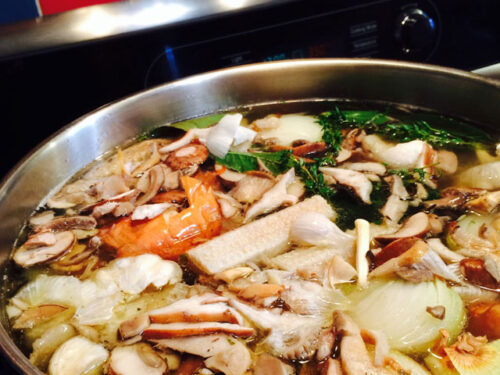It’s 4:15 am, in the midst of the 30 Days of Writing challenge I joined and the very early days of blog writing. I’m curled up in one of my quilts, sipping tea and scribbling recipes. Recipes which are not, by the way, related to the writing prompt for whichever day this is! It’s worth pondering why.
When my first granddaughter was born, just before I turned 50, I noticed a surprising thing. In the midst of making baby quilts and packing glass baby bottles for the trip across the pond, I began to get an inkling that things were changing inside me. Suddenly, things that had been sort of philosophically important to me for years began to seem more urgent. This tiny person, this wee image of my son, this huge new spark of love in my heart had to grow up in this world. And if we’re honest, this world could use some work!
I began, a bit tentatively at first, to shake loose the voices of the way we’ve always done it. That left me searching for some how could we do it better voices. The family elders were not universally pleased! But there are some serious health challenges in my family and, so, I began to learn.
Household chemicals and personal products—the least toxic I can find or make.
Laundry hanging on the front of my house to dry. (Many days I can’t get to the back!) And, yes, Granny, no unmentionables!
No tissue paper in shopping bags. No paper appointment cards. Recycled paper towels. Sorry, Mom!
Well, you get it…
The garden has been considerably more challenging. No sun out back. Veggies in the front. Organic veggies. No Roundup! And this year, because the ground keeps getting farther and farther away, serious raised beds. The neighbors are adapting. And the tiny lettuces and collards are persevering through freezing nights in Atlanta. There’s even some cilantro out there!
Food, it seems, is a central issue for me. Food as health, as joy, as a huge economic and environmental factor. Food as memories and as a path to confidence for the mini women in my life. Food as a way to make a difference.
I’ve found many teachers, and I’ll pass them along as we go. First, Marc David who claims, in The Slow Food Diet, that no matter what food we eat, we should choose the highest quality version of that food.
Quality, he explains, means any or all of the following: real; fresh; organic; gourmet; lovingly crafted; homemade; locally produced; heirloom varieties; nutrient dense; low in human-made toxins; grown and marketed with honesty and integrity; tasteful; filled with true flavor, not virtual ones that mask the absence of nutrients and vitality. Quality means that care and consciousness permeate a food, and that the food itself has a good story to tell (44-45).
The biggest thing I’ve discovered is that we have to feed the family we’ve got! In my case, that involves a gluten-free, diabetic husband who likes same-ness. A former vegetarian turned omnivore (me) who likes difference and is still trying to address pain, inflammation, and mobility challenges which have often left shopping and cooking on the difficult to impossible scale.
My daughter-in-law and girls are vegetarians who eat fish, eggs, and dairy but no meat and there are cardiac concerns in the family. My son is a serious foodie. The girls eat real food. There’s just no predicting what or when! (Though olives are generally a good bet!)
And my dog may have allergy issues.
I grew up with a mother who strongly believed that everybody eats the same thing, everybody eats everything on the table, holiday menus never change, and, surely, the vegetarians won’t mind a little canned chicken stock in the casserole. We’ve had a few challenges!
I now cling to the notion that none of them, blessedly, have starved yet and they’re not likely to do it today! Also, the Pilgrims don’t care what we eat! When everybody is around my strategy is to get good, clean, high quality stuff, put a bunch of it on the table, and let everybody choose. Kind of like tapas! Also, I plan for at least a couple of things the girls can help make. They’re much more likely to eat those. (My not-quite-5-year-old ate 3 lobster tails at Thanksgiving!)
Bill and I scale it down. Lots of veg, some (mostly) unprocessed carbs, and often a shared serving of meat or some fish. About 70-80% of what we eat at home comes with no ingredient label. Food that is what it is. We’re making progress!
For now, though, it’s a meditation CD until morning!

